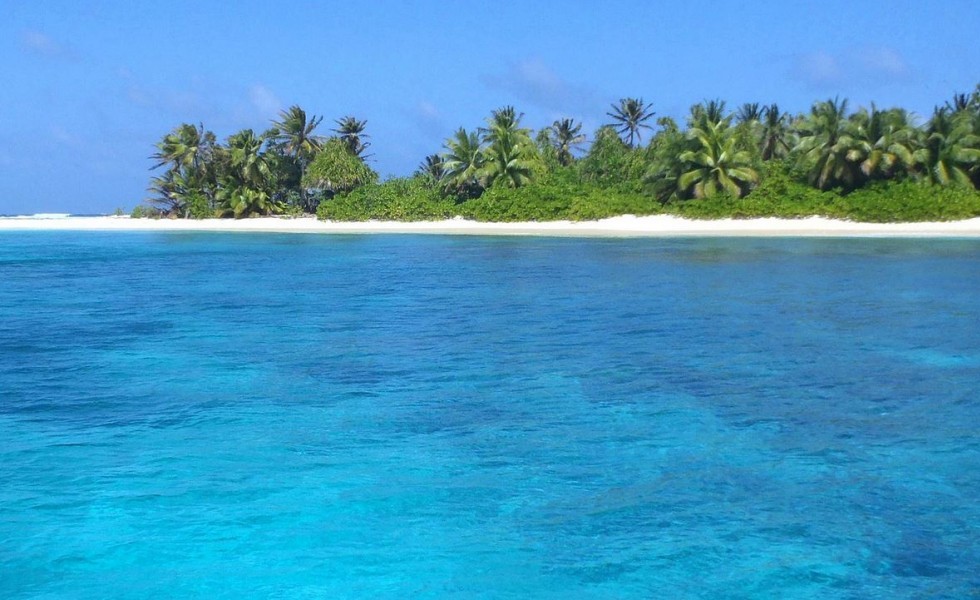Search for cities, countries, lakes and rivers
Marshall Islands

Marshall Islands © By Erin Magee
Marshall Islands Sea Temperature
This page provides detailed information about the water temperature in Marshall Islands. All countries, cities and resorts on the coast. The range of sea temperatures for today. We find every spot where you can swim and tell you what the water temperature is there today and throughout the year.
Current Sea Temperature
27.7°C
minimal
28.7°C
average
29.5°C
maximum
Graph of Sea Temperature Changes in Marshall Islands Over the Last 60 Days
The Warmest Places on the Seaside in Marshall Islands Today
The Most Popular Seaside Resorts in Marshall Islands
Seas and Oceans that Border Marshall Islands
Water Temperature in Marshall Islands: General Trends and Swimming Opportunities
The Marshall Islands, located in the central Pacific Ocean, have warm tropical waters that remain ideal for swimming and other water activities throughout the year. The sea temperature typically ranges from 28°C (82°F) to 30°C (86°F), making it consistently comfortable for swimming. The pleasant and steady temperatures of the water attract visitors looking to enjoy a variety of aquatic activities in a peaceful and unspoiled environment.
The islands boast beautiful coral reefs and clear lagoons that are perfect for snorkeling and swimming. Popular spots like Bikini Atoll and Majuro offer calm, warm waters with excellent visibility, making it easy to explore vibrant marine life, including colorful fish, sea turtles, and coral formations. The clear waters also provide the perfect environment for relaxed swims and discovering the underwater beauty of the region. For divers, the Marshall Islands are known for their stunning underwater landscapes, including shipwrecks and abundant marine ecosystems.
In addition to swimming and snorkeling, the Marshall Islands offer opportunities for kayaking, paddleboarding, and fishing, all of which can be enjoyed in the calm, warm waters surrounding the islands. The relatively remote location of the islands means that visitors can experience a tranquil and secluded aquatic environment, away from the crowds often found in more popular tropical destinations. Whether you're swimming in the lagoons or exploring the rich marine life, the Marshall Islands provide an excellent destination for water-based activities.
General Information and Geographical Location of Marshall Islands
Original name of the country: Aolepān Aorōkin Ṃajeḷ
Marshall Islands are located in Australia and Oceania. The country is washed by the Pacific Ocean. Marshall Islands - has a fairly long coastline. To determine the temperature of water on them, we track 23 settlements and resorts. Link to Google Maps.
Marshall Islands Weather
The Marshall Islands have a tropical climate, characterized by warm temperatures and high humidity throughout the year. Average temperatures range from 77°F to 88°F (25°C to 31°C), with little seasonal variation due to the islands’ location near the equator. The region receives abundant rainfall, averaging between 80 and 160 inches (2,000 to 4,000 mm) annually, with the wettest months typically occurring from May to November. The constant warmth and humidity are moderated by trade winds from the northeast, which provide some cooling, especially during the drier months from December to April.
Although the Marshall Islands are outside the main typhoon belt, they can still experience tropical storms, particularly from July to November. However, prolonged droughts can also occur, especially during El Niño years, when rainfall patterns become irregular. The surrounding ocean remains warm year-round, with water temperatures averaging around 82°F (28°C), making marine activities like swimming, fishing, and diving popular in any season. Despite the frequent rain, the climate remains consistently warm, making the islands an inviting destination for those who enjoy tropical weather.
Frequently Asked Questions About Marshall Islands and its Water Temperatures
What is the sea temperature today on the coast of Marshall Islands?
The sea temperature today on the coast of Marshall Islands ranges from from 82°F (27.7°C) in Mejit to 85°F (29.5°C) in Taroa.
Which seas and oceans border Marshall Islands?
Marshall Islands is bordered only by the Pacific Ocean.
How long is the coastline in Marshall Islands?
According to The World Factbook, the length of Marshall Islands's coastline is 229 miles (370 km), while the World Resources Institute estimates it at 1,308 miles (2,106 km).
What is the best time for swimming and beach holidays on the coast of Marshall Islands?
In Marshall Islands, the average monthly water temperature does not drop below 68 degrees Fahrenheit (20 degrees Celsius) in any month of the year.
What is the sea temperature history in Marshall Islands?
Here are the ranges of sea temperatures in Marshall Islands by month based on historical data: in January from 77°F (25°C) to 87°F (31°C), in February from 77°F (25°C) to 87°F (31°C), in March from 77°F (25°C) to 86°F (30°C), in April from 78°F (26°C) to 86°F (30°C), in May from 78°F (26°C) to 87°F (31°C), in June from 78°F (26°C) to 87°F (31°C), in July from 78°F (26°C) to 87°F (31°C), in August from 80°F (27°C) to 87°F (31°C), in September from 80°F (27°C) to 89°F (32°C), in October from 78°F (26°C) to 89°F (32°C), in November from 80°F (27°C) to 89°F (32°C), in December from 78°F (26°C) to 87°F (31°C).
